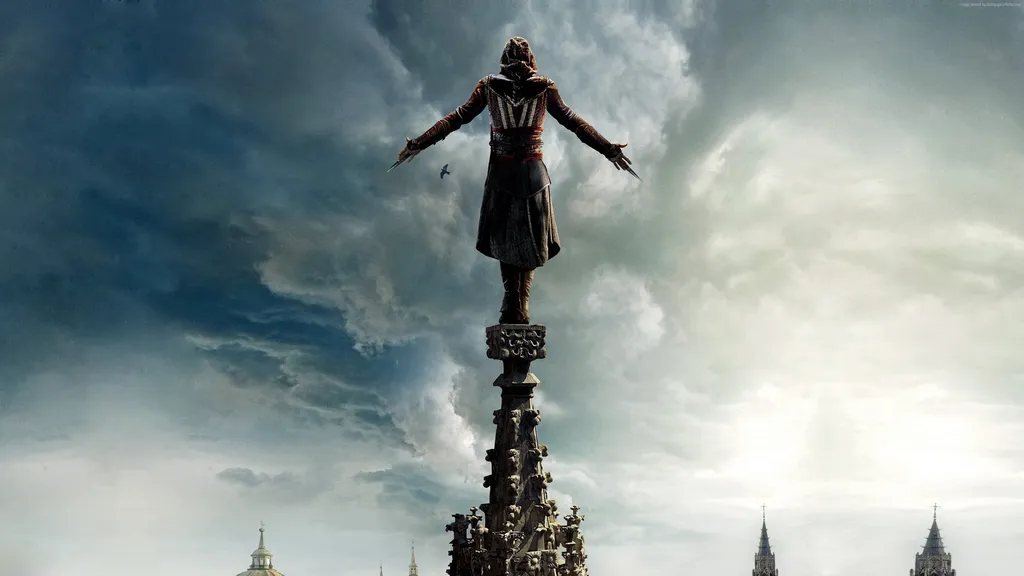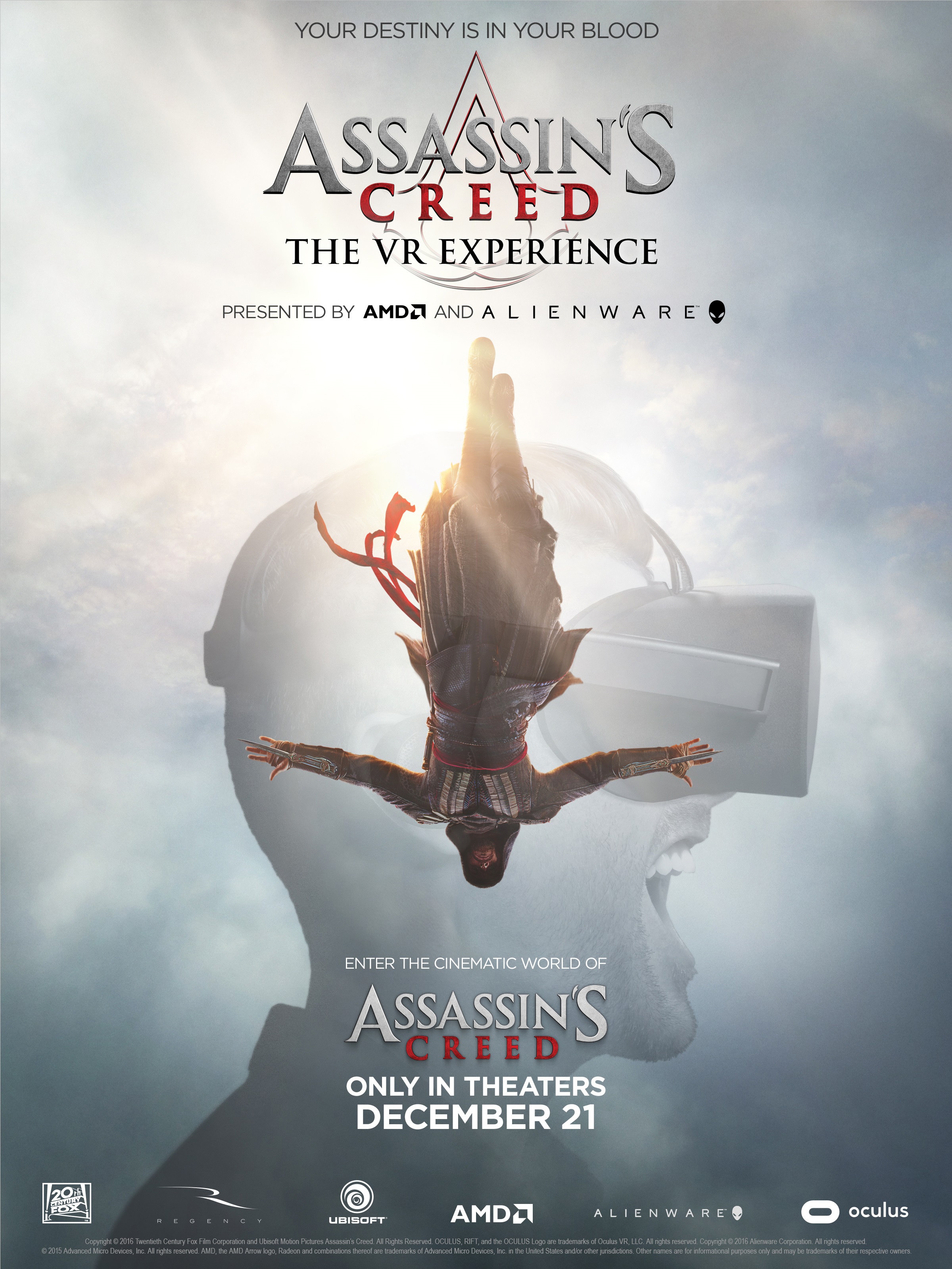In mid-October we learned about an upcoming VR experience was in development to accompany the theatrical release of the Assassin’s Creed feature film starring Michael Fassbender (X-Men: Days of Future Past, Inglourious Basterds). As it turns out, the project is a large-scale collaboration between AMD, Alienware, Practical Magic, 20th Century Fox, New Regency, and Ubisoft. Here’s how they made it happen.
The 360-degree experience was filmed by Practical Magic in cooperation with 20th Century Fox and New Regency. The theatrical activation will feature kiosks with Oculus Rift headsets powered by Alienware Aurora PCs using AMD Radeon RX 480 graphics cards.
The five-minute experience promotes the upcoming Ubisoft Films and 20th Century Fox movie starring Michael Fassbender, which opens Dec. 21. Matthew Lewis, CEO and founder of Practical Magic, told UploadVR from the outset the goal was raising the visual quality bar for VR videos.
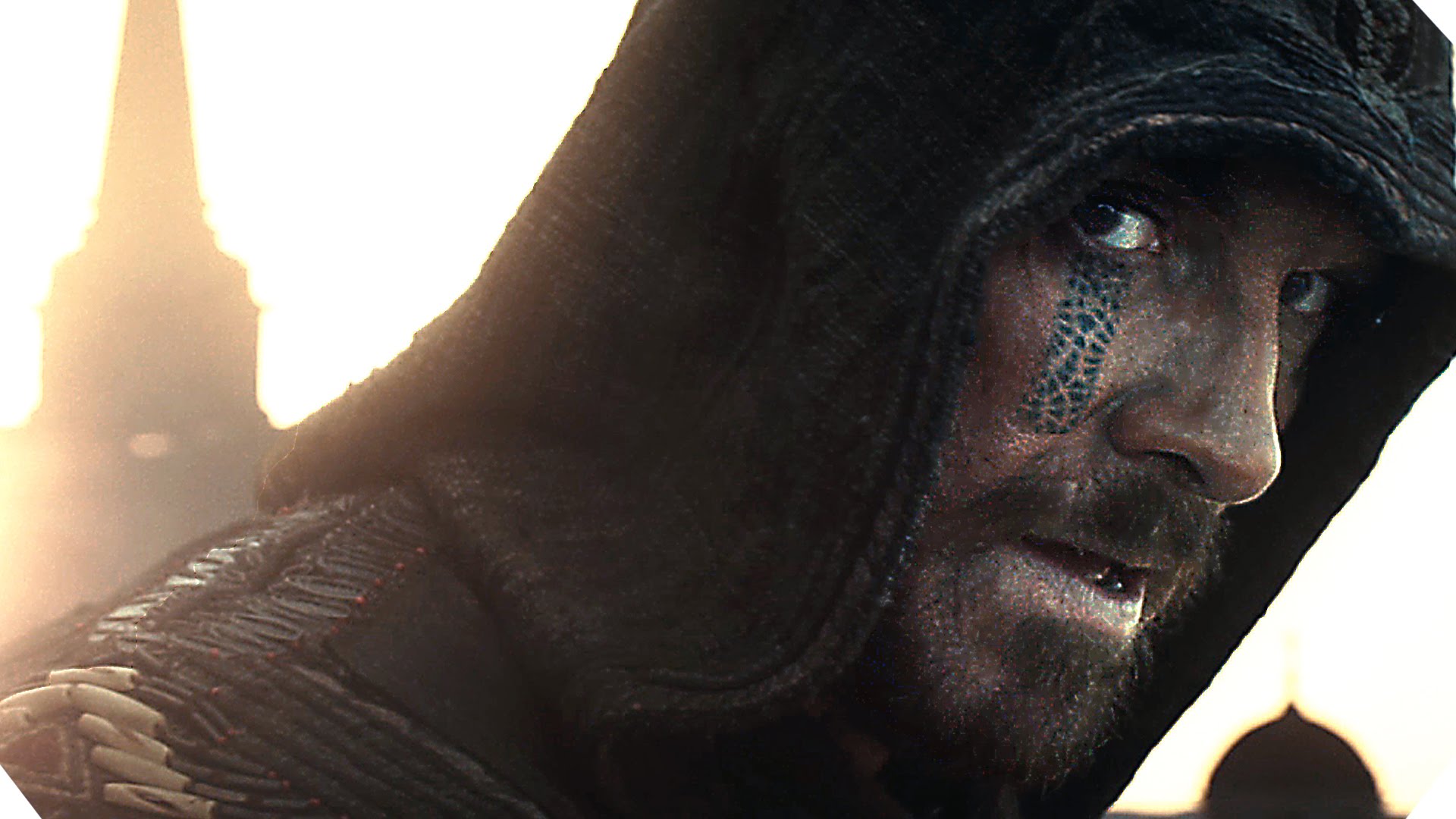
“The film Justin Kurzel and Adam Arkapaw shot is beautiful, and we wanted to make sure the VR experience kept up,” Lewis said. “This meant we were going to be building a lot of new production and post-production technology, which is what ended up happening at Practical Magic.”
While the Spanish Inquisition scene in the big budget film was shot on location in Malta, the VR experience was shot in Los Angeles. Lewis said his team went out with drones and scanning equipment to painstakingly scan the set, props, and other elements from the film production in Malta and London.
“Over the course of a few days, we scanned the world of the movie, and took it back with us to Los Angeles,” Lewis said. “We were then able to recreate the set both physically in the art department, and in the computer at extremely high resolution.”
A cast of 50 to 60 people assembled in Los Angeles to bring the Spanish Inquisition to life. Because of the 360-degree nature of the experience, Lewis said a lot of the background talent ended up featured very prominently in the sequence.
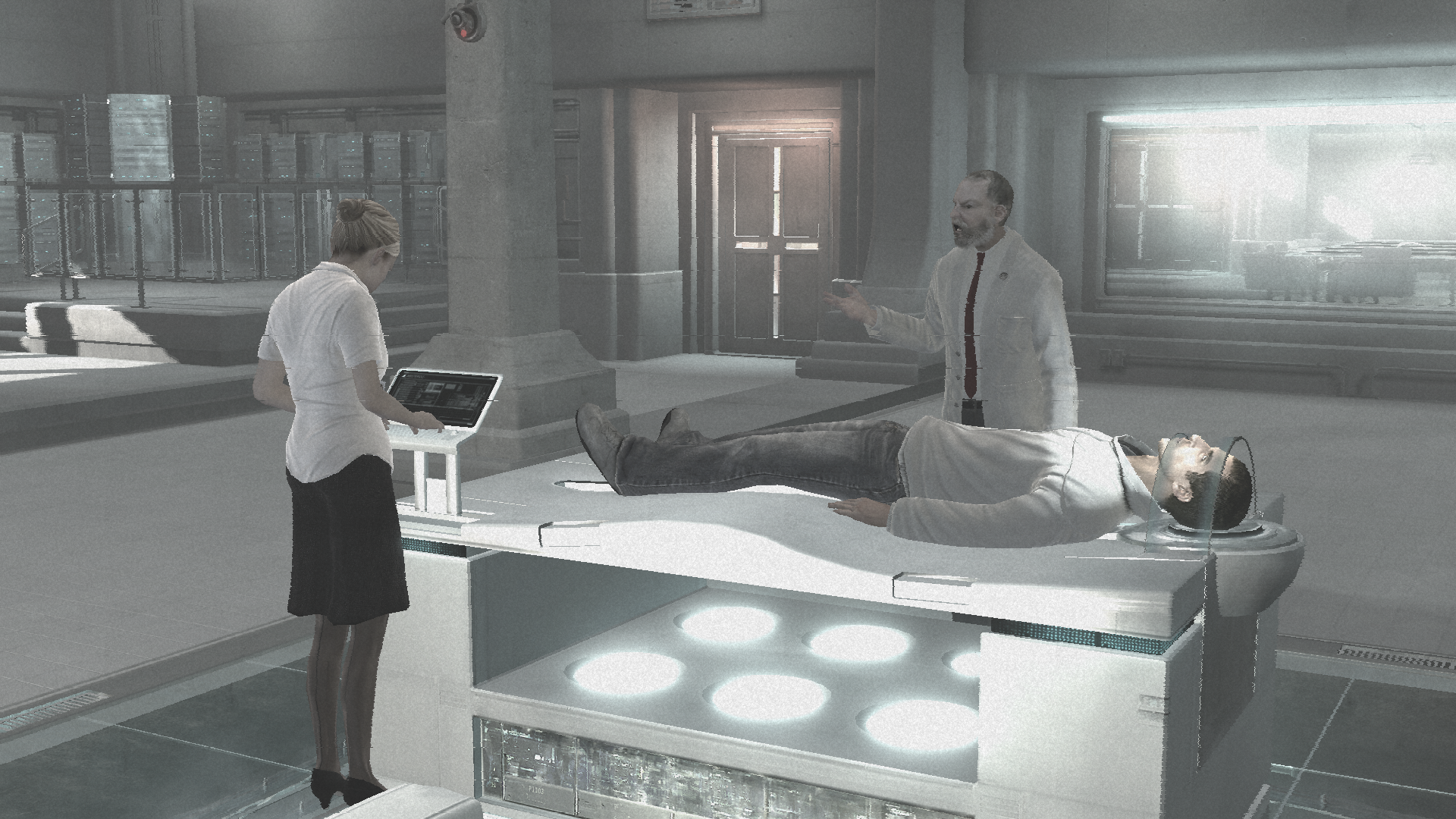
“There’s action happening all around you,” Lewis said. “If you watch it more than once, you definitely see things you missed the first time that add to the experience. Right at the very beginning, you get a full true 360 view of the Animus — every last inch of it — so you can study it in great detail and see things you might have missed in the movie. It’s a gorgeous set full of props and eye candy, and it’s the same exact set you see in the film.”
Practical Magic produced the show in segments over the course of 2016 in London, Malta, and Practical Magic’s VR studio in Burbank, and it took a laundry list of new technology to pull it off.
“We weren’t happy with any 360 camera rig at all, so almost all of the action was captured using motion control rigs, including some of our own invention,” Lewis said. “We used mostly RED Dragon cameras and shot multiple passes of everything, with a baseline resolution of 6K. The hallway fight scene is actually 26 passes of 6K images composited together covering different angles of the scene. When you see it at full resolution, it feels cinematic — it’s rich, sharp and detailed. The dynamic range is there — it doesn’t feel muddy or overly-compressed. That was hugely important to us. We also really need to call out Litegear, our lighting supplier, who provided literally hundreds of individually controllable LED light fixtures that allowed us to perfectly manage the world light during motion control. We couldn’t have done it without them.”
Post-production was done in-house at Practical Magic, using Nuke and CaraVR for compositing, Maya for 3D and Vray for rendering, and After Effects for a few key tasks, along with some custom software, plugins, and tools of their own. Lewis said his studio has a pretty solid on-premises render farm that is built specifically to deal with VR, so every frame seen on screen was generated there specifically.
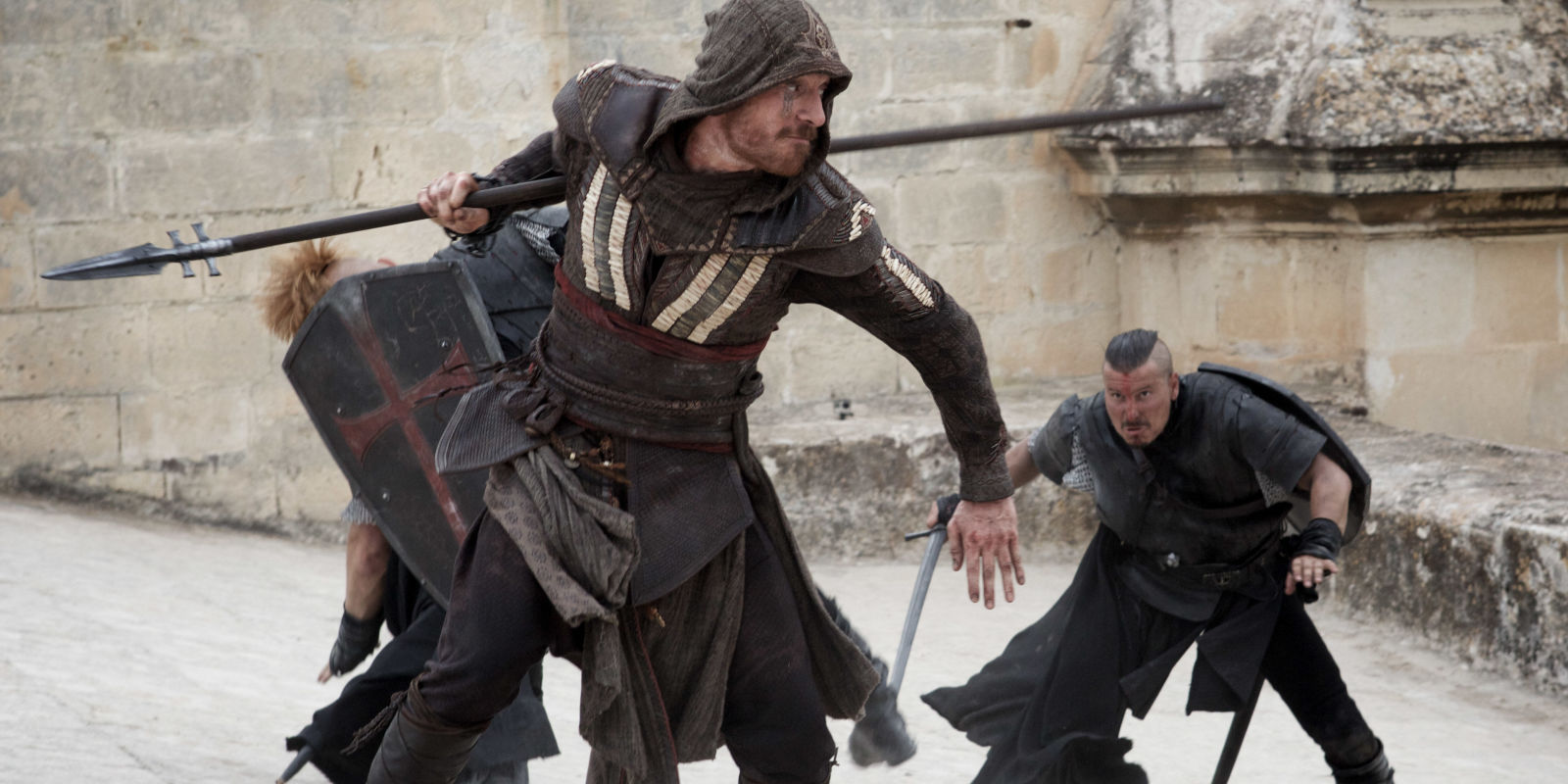
“Editing itself was only a fraction of the post-production work,” Lewis said. “The visual effects component was very complex, and took months of work. The post-production pipeline for VR industry-wide is very immature and the software is alpha quality at best. We were also pushing our hardware to the absolute limit — imagine trying to work with 26 video streams of 6K footage at the same time in the same shot. We needed the best hardware you can get your hands on, and that’s what it took to get the job done. Otherwise, we’d still be sitting here watching progress bars.”
Fassbender plays Aguilar de Nerha in the film, an original character that’s part of a new story that ties into the universe of Ubisoft’s bestselling video game franchise. While filming last year at Pinewood Studios, Practical Magic shot Fassbender for this exclusive VR experience.
“We shot him on stage in London and he was a great sport,” Lewis said.
While Fassbender is the central character in the big screen adventure, the VR experience allows users to step into the boots of an original character.
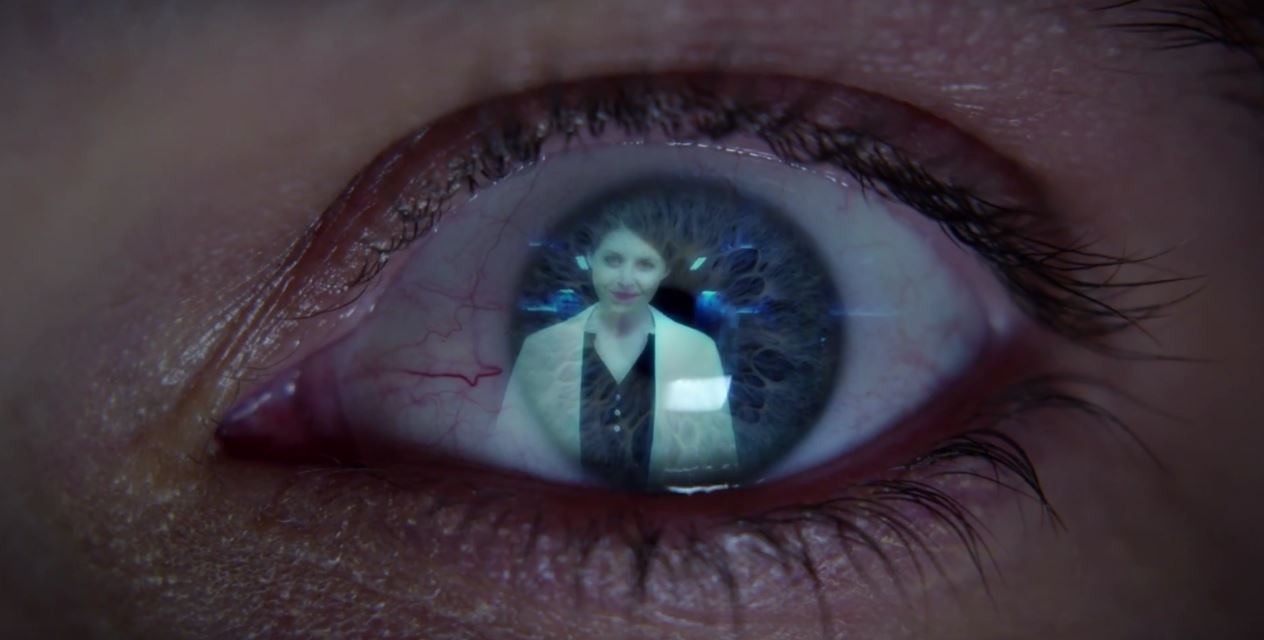
“The viewer is not playing Aguilar — that’s a job best left to Michael Fassbender’s talents,” Lewis said. “I don’t want to give too much away, but yes the viewer is an Assassin.”
Gamers will also recognize Easter Eggs in the VR piece, according to Lewis. These occur mostly in the first scene, which was shot in the Animus set from the movie. There are other elements inspired by the video game franchise, as well.
“We move the camera a lot, which means there are a number of major parkour-type moves the viewer will experience,” Lewis said. “There are plenty of classic, tried-and-true Assassin’s Creed moves. There’s one part that always makes people scream a bit, which is exciting to watch.”
Lewis said the team knew the games and immediately everyone went to,“We have to do the Leap of Faith in VR!” So naturally, Lewis jokes, “I don’t want to give it away by saying we did a Leap of Faith in VR, but I mean, we did a Leap of Faith in VR, obviously.”
Lewis said the last few years of experience working on complex cinematic projects like Capture for The CW have been invaluable.
“We like to move VR cameras while we’re shooting, which is traditionally considered very difficult — so moving VR cameras has kind of become our thing at Practical Magic,” Lewis said. “A couple of years ago we built a cinematic VR camera rig for Google that Justin Lin used to produce Help!, which won the Gold Lion for VR at Cannes this year. We’ve continued to build all manner of cinematic VR rigs since. If we didn’t have engineering and rapid prototyping in-house to build our own VR gear, and a lot of really experienced technical people, we couldn’t have pulled any of this off.”
Gamers will get a first look at the Assassin’s Creed VR Experience today for free through the Oculus Video app on both Oculus Rift and Samsung Gear VR, as well as a 360-degree video on Facebook. Additionally, moviegoers will see a national theatrical roll-out of the experience at AMC theaters in San Francisco, Los Angeles, Austin, and New York City between Dec. 2 and Jan. 1.

